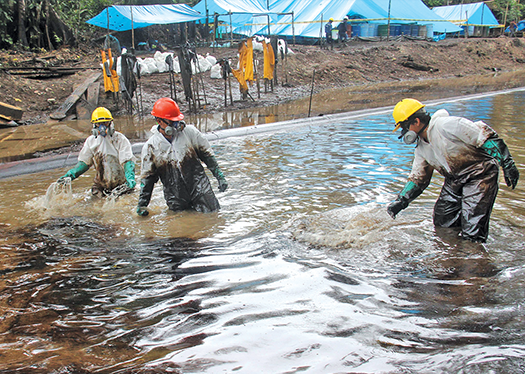
Emergency crews responding to crude spills from pipelines and other oil infrastructure in the Peruvian Amazon have been a common scene over the decades. (Photo by Barbara Fraser)
Fifty years after oil drilling began in the northeastern Peruvian Amazon—and over two decades after Indigenous organizations began calling attention to the watershed pollution that ensued—hundreds of communities still lack safe drinking water. What’s more, a lasting solution may be decades away. A new report by the Peruvian government Ombudsman’s Office found scant progress on the construction of permanent water and sanitation systems in the 98 communities represented by four Indigenous federations, known as the “cuatro cuencas,” or four watersheds. These communities pressured the government to install more than 60 temporary water-purification systems in 2015 in communities affected by pollution from oil operations in the Pastaza, Corrientes, Tigre and Marañón watersheds. “But the problem is far greater” than that confronted by those communities, says Abel Chiroque, who heads the Ombudsman’s Office in the northeastern region of Loreto, where the oilfields are located. “The gap in access to... [Log in to read more]